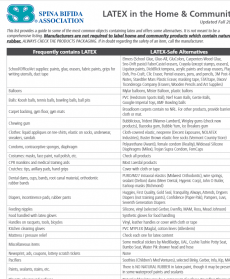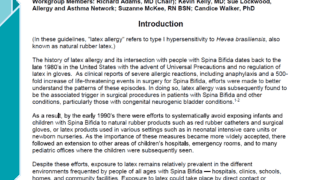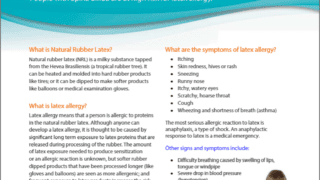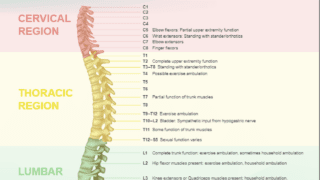Latex Allergy Fact Sheets and Other Materials
You can find specific information on latex allergies at the Asthma and Allergy Foundation website.
Latex Allergy and Foods
Parents and patients should be aware that caution should be taken regarding what has come to be labeled “latex fruit syndrome.” Research has shown that some foods have proteins that are like those in rubber tree sap. Sometimes people with latex allergies experience a reaction to “latex reactive foods.” This may be referred to as latex-food syndrome or latex-fruit allergy. Latex reactive foods include primarily nuts and fruit, but also some vegetables.
Foods with a high degree of latex allergy association or prevalence:
- Avocado
- Banana
- Chestnut
- Kiwi
Foods with a moderate degree of latex allergy association or prevalence:
- Apple
- Carrot
- Celery
- Melons
- Papaya
- Potatoes
- Tomatoes
Foods with low or undetermined latex allergy association:
Apricot, Buckwheat, Castor Bean, Cayenne Pepper, Cherry, Chick Peas, Citrus Fruits, Coconut, Dill, Fig, Grape, Hazelnut, Lychee, Mango, Nectarine, Oregano, Passion Fruit, Peach, Peanut, Pear, Persimmon, Pineapple, Plum, Rye, Sage, Shellfish, Soybean, Strawberry, Sunflower Seed, Sweet Pepper, Walnut, Wheat, Zucchini.
This information does not constitute medical advice for any individual. As specific cases may vary from the general information presented here, SBA advises readers to consult a qualified medical or other professional on an individual basis.
More information can be found in the Latex and Allergy Network’s Latex Allergy Toolbox.
Tags



